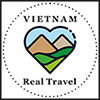GEOGRAPHY
Vietnam is located on the eastern seaboard of the Indochina peninsula, sharing common borders with China to the north, and Laos and Cambodia to the west. To the east and south lies the East Sea. Mountains and hills cover four-fifths of Vietnam’s territory with the Truong Son Range stretching over 1,400km. Mount Fansipan (3,142m) is the highest peak of mainland Southeast Asia. The most populated areas in Vietnam are the Red River Delta and the Mekong Delta. Which feature fertile soil fed by a dense river network. Vietnam’s territorial waters cover over 1,000,000km2. The country’s coastline stretches for 3.444km and offers many stunning tropical beaches. Vietnam’s total area is 331,690km2
RESOURCES
Minerals: coal, iron, aluminum, tin, and oil. Agricultural and forestry products: rice, maize, sweet potatoes, peanuts, soy beans, rubber, lacquer, coffee, tea, tobacco, cotton, coconut, sugar cane, jute, and tropical fruit.
CLIMATE
Vietnam’s climate varies a great deal from north to south. Northern Vietnam has four distinct seasons: spring, summer, autumn and winter. In the north, summers are warm, while winters are cool and misty.
Southern Vietnam is warm all year round, with temperatures typically varying by just three degrees Celsius. Tropical monsoons occur from May to October in the north and south, and from September to January in the Central region.
ADMINISTRATIVE DIVISIONS
Vietnam has 63 provinces, including five municipalities (Hanoi, Ho Chi Minh, Haiphong, Can Tho, Da Nang).
HISTORY
Vietnam’s history can roughly be divided into the following periods:
Pre-history: From circa 400,000 years (Paleolithic) to 4,000 years (Neolithic) ago, cultures in the area included Son Vi, Hoa Binh, Bac Son, Ha Long, and Hoa Loc.
Pro-history: According to legends, Vietnam originated in the seventh century BC when the Hung Kings founded Van Lang. In the third century BC, king An Duong Vuong named Au Lac and ruled until 179 BC. Chinese occupation: Vietnam was occupied by China from the first to the tenth century AD.
Monarchy: Kings reigned from 968 to 1945.
Independence: The Democratic Republic of Vietnam as founded after the 1945 AUGUST Revolution, when President Ho Chi Minh declared independence. The Socialist Republic of Vietnam has been the official name since 1976.
ETHNIC GROUPS
There are 54 ethnic groups living in Vietnam. The Viet (or kinh people account for 88% of Vietnam’s population and are mostly concentrated in the lowlands. Most of the country’s 5.5 million ethnic minority peoples live in mountainous areas. Major groups include the Tay; the Nung; the Thai; the Muong; the H’mong; the Dao; the Hoa; the Khmer; the Bana; the Giarai; and the Ede.
RELIGION
Major spiritual influences in Vietnam include Buddhism, Taoism, Confucianism, and the native religions (ancestor, Mother Goddess Worship). Christianity arrived in the late 18th century and now has the second largest following, after Buddhism. Other religions practiced include Islam and Cao Dai, with higher concentrations in the South.
VIETNAMESE LANGUAGE AND SCRIPTS
More than 80% of the population speak Vietnamese (or Kinh), the national language. Ethnic minorities have native languages. Three scripts have influenced Vietnam’s history: Han (Classical Chinese) ideograms were used until the beginning of the 20th century. The Nom script, created between the 11th and 14th centuries, is based on the Han script. European missionaries in the 17th century used the Roman alphabet to record the Vietnamese language and created Quoc Ngu script. After 1945, Quoc Ngu was developed and used as the national language.
BUSINESS HOURS
Government offices and museum open early, around 8.00am, and close between 4.00pm and 5.00pm.
CURRENCY
The currency in Vietnam is the dong (VND), which currently trades at about VND 23,300 to the US dollar. Credit card acceptance, especially for Visa, is spreading in higher-end hotels, restaurants, and shops in big cities.
HOTELS AND REGISTRATION
There is a wide range of accommodation available in Vietnam’s major cities. Hanoi and Ho Chi Minh City feature a choice of five-star hotels, while guest houses and mini-hotels offer no-frills rooms for around VND 600,000. As hotels and private hosts must register your presence with the police. You will be expected to hand over your passport.
SAFETY
While Vietnam is one of the safest countries in Asia, you should take care with your possessions. Secure your valuables, documents, and credit cards in your hotel’s safe. Beware of pickpockets purse-snatches, and mobile phone thieves, especially in Ho Chi Minh City, if you choose to drive a motorbike or ride a bicycle, by law you must wear a helmet.
TELECOMMUNICATIONS
Many hotels, especially up-market ones, add extra fees. Check the rates before dialing. One long-distance service offers a flat fee of around VND 16,000 per minute to 50 countries; dial 171 followed by the number.
Public phones require phone cards, which are available at post offices. Internet Café can be found everywhere all over the country.
VISAS
Tourists visas are generally valid for 30 days. Should you wish to extend your visa, go to the immigration office at 40A Hang Bai St. Hanoi; 54 Nguyen Trai, D.1, Ho Chi Minh City, 9 Tran Quy Cap, Da Nang City. Many tour operators can also extend your visa for a fee.
PRICE GUIDE
In Vietnam, be prepared to bargain.
To give you an idea of where to start, we suggest the following prices:
TRANSPORT
Xe om (motorbike taxi):
VND 15,000/km
Public bus: VND 10,000/a ride
GROOMING
Shoeshine: VND 20,000/pair
Hairwash: VND 50,000
Street Haircut: VND 50,000
Street-side laudry: 20,000/item
RAIN GEAR
Plastic rain poncho:
VND 10,000 for thin
VND 50,000 for thick
KEY CONTACT
Phone numbers
Country code: 84
Operator: 110
Police: 113
Fire: 114
Medical aid: 115
Enquiries: 116
Information: 1080
Info center: 1081
FOOD
Pho (beef noodle soup): VND 50,000/bowl
Plain baguette: VND 5,000/loaf
Banana: VND 5,000/each


